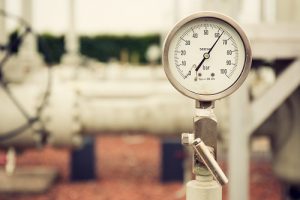Personnel safety is always one of the topmost concerns in any business. This is especially true in industries that deal with substances that are potentially harmful to human health, like chemical plants and wastewater treatment facilities. Oil and gas production, as well as semiconductor polyurethane foam manufacturing companies, also handle similar materials, so their employees should take extra precautions in protecting themselves from accidental exposure.

Without preventive measures in place, employees and other individuals near the area can fall victim to health issues caused by gas leaks. Typical symptoms include headaches, dizziness, nausea, and fatigue. But, in worst cases, breathing problems and eye, throat, and skin irritation may also be experienced.
Fortunately, they can be avoided by taking precautionary steps that ensure personnel safety, like installing fixed gas detection systems on the premises. These are devices that check the air in an enclosed space for possible contamination. If they notice high concentrations of certain gases in the samples, they’ll automatically ring or light an alarm, signaling people to leave the area immediately.
Gas detection systems come in many forms, each designed to meet a business’s specific needs. For instance, wastewater treatment and oil manufacturing facilities often deal with hydrogen sulfide (H2S), so they need to have an H2S monitor. This device identifies and measures its substance namesake, warning people if there’s an excessive amount of it in the air. Similarly, methane sensors are best for electrical manufacturing and chemical plants, since it’s prevalent in those places.
But, there are also devices that can identify more than one kind of gas, like the DOD EC – 20. Read on to learn more about this type of system.
What It Is
The DOD EC – 20 system is a fixed unit, which means that it’s set in one place at all times and isn’t portable. It can still monitor the air in other parts of the premises, thanks to a series of high flow pumps and sample lines that lead to where the machine is installed. This makes it possible for the sensor to analyze samples collected from up to 20 different locations within 450 feet from the device. So, it’s often used as a replacement for much older extractive centralized monitoring models.
How It Works
On the outside, this unit looks like a regular file cabinet. Inside this housing are rows of the New Cosmos PS-7 detectors, which are electrochemical sensors. Each has 2 to 4 working electrodes that come into contact with an electrolyte and indoor air through a porous membrane. They produce quick and accurate readings, constantly checking the environment for traces of nitric oxide, carbon monoxide, sulfur dioxide, hydrogen sulfide, and chlorine. This makes it possible for the DOD – EC 20 to analyze, identify, and measure the presence of multiple gases simultaneously.
The Cosmos’ sensors can be exchanged for new ones, allowing the users to check the air for other types of gases. This flexibility makes the DOD EC – 20 the perfect option for applications that have very specific needs. A single system can have up to 20 New Cosmos PS-7 detectors.
Its Advantages

Using a DOD EC – 20 fixed system comes with plenty of benefits. As mentioned earlier, this single device can detect a wide range of toxic materials, cutting back the need for various monitoring equipment. Another great thing about it is that it’s easy to integrate into an existing setup, as it’s compatible with the lines and pumps of older models. This helps cut down the cost of installing and replacing gas sensors.
This option can also be modified to include pyrolyzers, light towers, and communication protocols to suit its application’s needs better.
Check out DOD Technologies, Inc. to find the best gas leakage detection system that you can have installed at your company. Their in-house experts will guide you throughout the process, from choosing a model to maintaining it, so you’re guaranteed to be in good hands.






